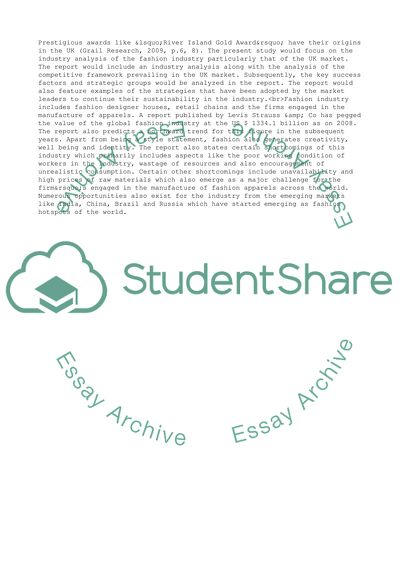Cite this document
(Strategic Analysis in the Fashion Industry Coursework, n.d.)
Strategic Analysis in the Fashion Industry Coursework. Retrieved from https://studentshare.org/business/1745740-strategic-analysis-in-the-fashion-industry
Strategic Analysis in the Fashion Industry Coursework. Retrieved from https://studentshare.org/business/1745740-strategic-analysis-in-the-fashion-industry
(Strategic Analysis in the Fashion Industry Coursework)
Strategic Analysis in the Fashion Industry Coursework. https://studentshare.org/business/1745740-strategic-analysis-in-the-fashion-industry.
Strategic Analysis in the Fashion Industry Coursework. https://studentshare.org/business/1745740-strategic-analysis-in-the-fashion-industry.
“Strategic Analysis in the Fashion Industry Coursework”, n.d. https://studentshare.org/business/1745740-strategic-analysis-in-the-fashion-industry.


